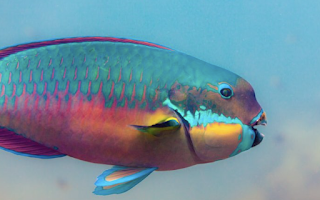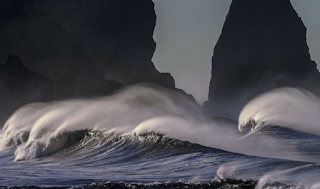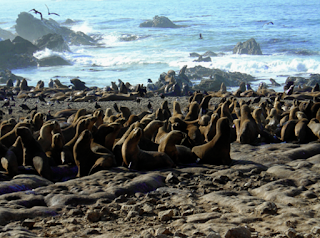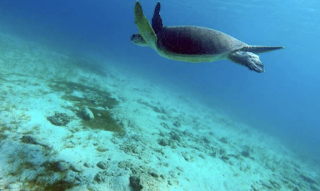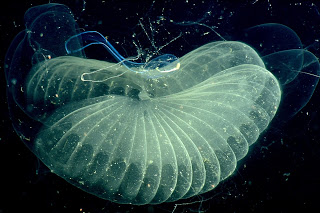Current administration opens Seamounts Marine National Monument for commercial fishing, Russia says ‘years’ needed to clean up Arctic spill, What makes a giant jellyfish’s sting deadly and more…
During a visit to rural Maine on Friday, President Donald Trump signed a proclamation to open a vast protected site off the East Coast to commercial fishing ― a move that goes against the very purpose of designating a marine monument. Established by the Obama administration in 2016, the Northeast Canyons and Seamounts Marine National Monument encompasses more than 4,900 square miles off the East Coast and is home to ancient seafloor canyons and seamounts, endangered whales, deep ocean corals and numerous migratory fish species. Rolling back the restrictions on that area, the liberal Center for American Progress estimated, would eliminate nearly 85% of ocean protections along the United States outside the remote western Pacific.
 May 2020 was the hottest May on record globally, according to data from the European Commission’s climate monitoring organization. The Copernicus Climate Change Service found that May of this year was 0.05 degrees Celsius warmer than the previous warmest May, which was in 2016. This May was also 0.63 degrees celsius warmer than the average May between 1981 and 2010. Last month, the most above-average temperatures were found over parts of Siberia, where they were as much as 10 degrees celsius above average. Copernicus noted that temperatures over western Alaska were also “much above average.”
May 2020 was the hottest May on record globally, according to data from the European Commission’s climate monitoring organization. The Copernicus Climate Change Service found that May of this year was 0.05 degrees Celsius warmer than the previous warmest May, which was in 2016. This May was also 0.63 degrees celsius warmer than the average May between 1981 and 2010. Last month, the most above-average temperatures were found over parts of Siberia, where they were as much as 10 degrees celsius above average. Copernicus noted that temperatures over western Alaska were also “much above average.”
3. UN Special Envoy – outline steps needed to reverse dramatic ocean challenges
 The Ocean is in trouble. Some 60 percent of the world’s major marine ecosystems have been degraded or are being used unsustainably. We know that the Ocean is getting warmer, that it is losing oxygen and becoming more acidic. These changes, driven by anthropogenic greenhouse gas emissions, are incrementally making life underwater more difficult, with big implications for life on land. Deep cuts in our greenhouse gas emissions are required if we want to reverse the declining health of the Ocean. As we approach the massive task of socio-economic recovery from the coronavirus pandemic, the self-interest of our species lies in investing public funds into a future of sustainable projects that help the environment and the climate.
The Ocean is in trouble. Some 60 percent of the world’s major marine ecosystems have been degraded or are being used unsustainably. We know that the Ocean is getting warmer, that it is losing oxygen and becoming more acidic. These changes, driven by anthropogenic greenhouse gas emissions, are incrementally making life underwater more difficult, with big implications for life on land. Deep cuts in our greenhouse gas emissions are required if we want to reverse the declining health of the Ocean. As we approach the massive task of socio-economic recovery from the coronavirus pandemic, the self-interest of our species lies in investing public funds into a future of sustainable projects that help the environment and the climate.
A new study reveals the diets of reef fish dictate how fast different species evolve. The breakthrough adds another piece to the fascinating evolutionary puzzle of coral reefs and the fishes that live on them. “Up until now we knew that many factors could have influenced the pace of reef fish evolution, but these factors were never examined altogether,” said Alexandre Siqueira, the study’s lead author from the ARC Centre of Excellence for Coral Reef Studies at James Cook University.
5. What makes a giant jellyfish’s sting deadly?
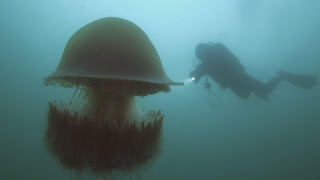 The giant jellyfish Nemopilema nomurai (also known as Nomura’s jellyfish) has a sting that really packs a punch and can, at times be fatal. Researchers reported in the American Chemical Society’s Journal of Proteome Research that they have identified the key toxins that make the invertebrate’s venom deadly to some swimmers.
The giant jellyfish Nemopilema nomurai (also known as Nomura’s jellyfish) has a sting that really packs a punch and can, at times be fatal. Researchers reported in the American Chemical Society’s Journal of Proteome Research that they have identified the key toxins that make the invertebrate’s venom deadly to some swimmers.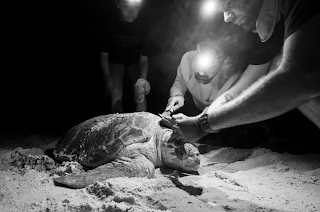 There is a world of life on the backs of loggerhead sea turtles, and it’s more abundant and diverse than scientists knew. An international team led by Florida State University researchers found that more than double the number of organisms than previously observed live on the shells of these oceanic reptiles, raising important questions about loggerhead sea turtle ecology and conservation. “This suggests loggerhead turtles are hotspots for organism abundance and biodiversity,” said Jeroen Ingels, a researcher with the Florida State University Coastal and Marine Laboratory and lead author of the study. “We suspect that larger organisms that are able to form structures serve as habitats for microscopic creatures and allow for greater levels of abundance and biodiversity.”
There is a world of life on the backs of loggerhead sea turtles, and it’s more abundant and diverse than scientists knew. An international team led by Florida State University researchers found that more than double the number of organisms than previously observed live on the shells of these oceanic reptiles, raising important questions about loggerhead sea turtle ecology and conservation. “This suggests loggerhead turtles are hotspots for organism abundance and biodiversity,” said Jeroen Ingels, a researcher with the Florida State University Coastal and Marine Laboratory and lead author of the study. “We suspect that larger organisms that are able to form structures serve as habitats for microscopic creatures and allow for greater levels of abundance and biodiversity.”
7. Russia says ‘years’ needed to clean up Arctic spill
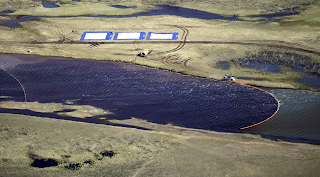 A Russian response team warns that a full clean-up of their recent Arctic oil spill will take years. The spill of over 21,000 tons of fuel took place after a fuel reservoir collapsed last month at a power plant operated by a subsidiary of metals giant Norilsk Nickel in the city of Norilsk. It is the largest ever to have hit the Arctic, say, environmentalists. Workers in waterproofs were using booms to contain the reddish-brown diesel on the surface of a river and pump it into tanks on the bank. “We will be removing diesel fuel from the Ambarnaya River for at least eight to 10 days,” Bronnikov said. “We will need years to completely clean up,” he added.
A Russian response team warns that a full clean-up of their recent Arctic oil spill will take years. The spill of over 21,000 tons of fuel took place after a fuel reservoir collapsed last month at a power plant operated by a subsidiary of metals giant Norilsk Nickel in the city of Norilsk. It is the largest ever to have hit the Arctic, say, environmentalists. Workers in waterproofs were using booms to contain the reddish-brown diesel on the surface of a river and pump it into tanks on the bank. “We will be removing diesel fuel from the Ambarnaya River for at least eight to 10 days,” Bronnikov said. “We will need years to completely clean up,” he added.
When most of us think about what climate change will do to our coastlines we tend to focus on how sea-levels are rising as the polar ice caps melt and the oceans warm. But that is only part of the story. What many don’t realize is that at the same time as sea levels are rising, storms are increasing in magnitude and frequency, resulting in larger ocean waves. These waves increase coastal erosion and the risk of flooding. New research suggests that by the end of the century the magnitude of extreme wave events will have increased by up to 10 percent over extensive ocean regions, and the frequency of storms that generate extreme waves will have increased by five to 10 per year.
9. Origins of genetic variability in seals
A new study led by Ludwig-Maximilians-Universitaet (LMU) in Munich researchers shows that fluctuations in population sizes in the past have had a significant effect on contemporary seal populations, and estimates the risk of genetic impoverishment in the species investigated. In the course of Earth’s history, evolution has given rise to an enormous range of biological diversity, which in turn enabled the emergence of complex, species-rich ecosystems. The availability of adequate levels of genetic variation is a basic prerequisite for evolution.
10. Aussie scientists turn to drones to protect sea turtles
Australian researchers have discovered they were underestimating numbers at the world’s largest sea turtle nesting site after turning to drone technology for the first time. Raine Island, off the northern tip of Australia, plays host to around 60,000 female green turtles who migrate hundreds of kilometers from the Great Barrier Reef to lay their eggs each year. Scientists working to protect the endangered species had struggled with how best to keep track of the nesting turtles, but revealed in a paper published in peer-reviewed journal PLOS One last week that their new use of drones showed they had been underestimating numbers by more than 50 percent.
General Information Stories
11. The sea’s weirdest creatures, now in ‘staggering’ detail
The bizarre life of the sea’s middle depths has long been a challenge to see, study and fathom. The creatures of that realm live under crushing pressures at icy temperatures in darkness. The fluid environment is unbound by gravity and hard surfaces, so natural selection allows for a riotous array of unfamiliar body parts and architectures. By human standards, these organisms are aliens. Now, a new kind of laser is illuminating some of the most otherworldly life-forms. The soft bodies of the abyssal class are made of mucoid and gelatinous materials — somewhat like jellyfish, only stranger.
———————————————–


